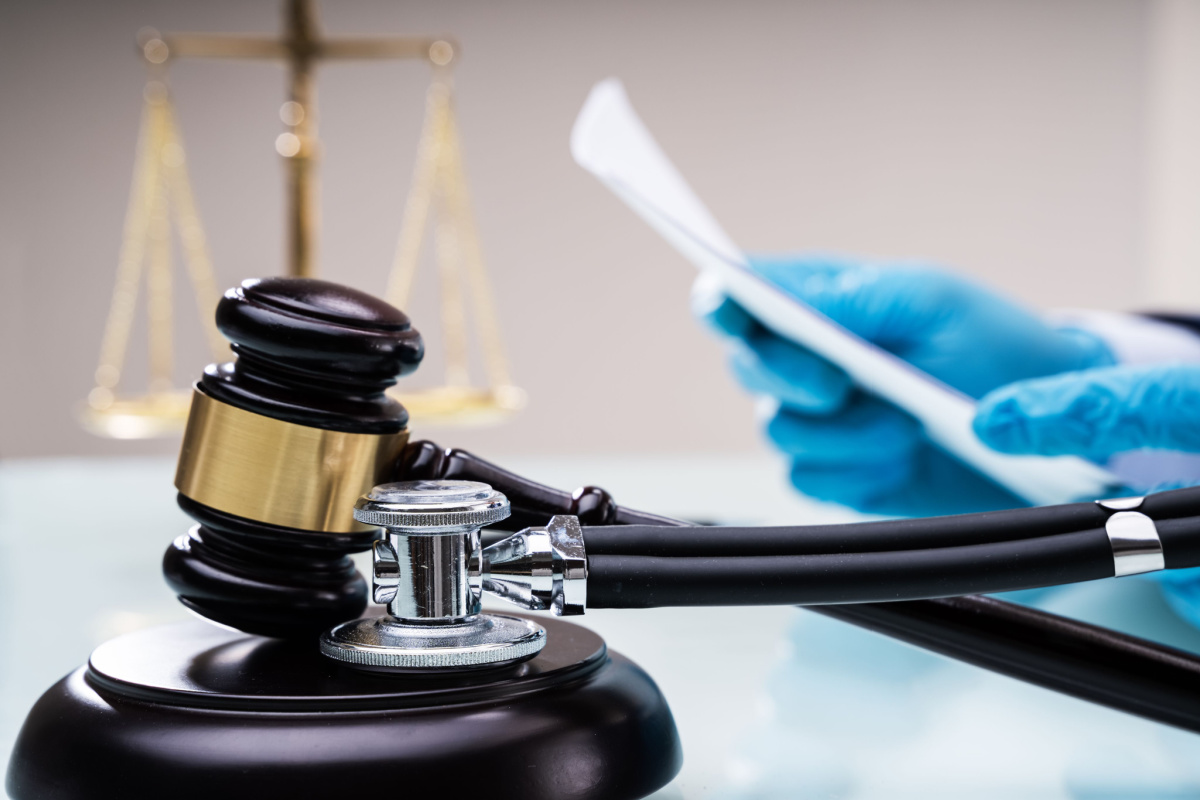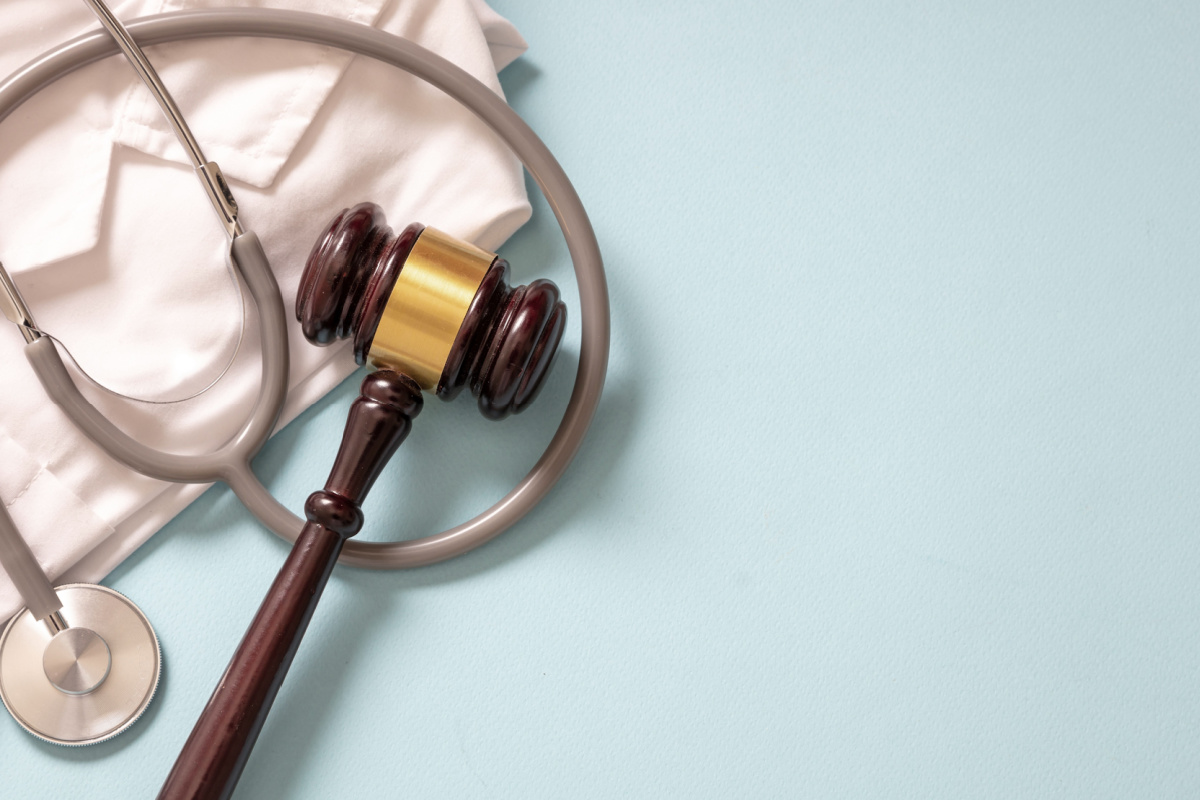Nursing home patients were especially vulnerable during the COVID-19 pandemic, and in 2020, two residents at the Southeast Louisiana War Veterans Home in Reserve, who were roommates and close friends, contracted the virus and unfortunately died one day apart. The residents’ families filed a medical malpractice lawsuit against the nursing home in 2022, claiming the facility did not do enough to prevent the men from exposure to the virus and shield them from the risk of contracting COVID-19.
In simple terms, medical malpractice in Louisiana happens when a healthcare provider, like a doctor or nurse, causes harm to a patient because they didn’t do their job properly. This goes beyond a simple mistake or a treatment that didn’t work. It means that the provider did not meet the “standard of care” that is expected in their profession. This standard is what any reasonable healthcare provider would do in the same situation. So, to show medical malpractice, it needs to be clear that the provider’s care was not up to these standards, and that this directly led to harm or injury to the patient.
Establishing a Doctor-Patient Relationship
In a medical malpractice case in Louisiana, the first thing that must be shown is the existence of a doctor-patient relationship. This means that the doctor agreed to diagnose or treat the patient, and the patient agreed to be diagnosed or treated by that doctor. This relationship is usually easy to prove if the person regularly sees the doctor. However, it can get a bit tricky if the interaction was less formal. For instance, if a doctor gave advice at a social event, would that count? It’s essential to show that the doctor agreed to provide medical care and the patient agreed to receive it. This agreement is the cornerstone of any medical malpractice case.
Identifying Negligence in Medical Malpractice
In Louisiana, finding negligence is the heart of a medical malpractice case. To show that a healthcare provider was negligent, one must prove they didn’t meet the standard of care typical in their field. This can be a tricky part. Did the doctor miss an important symptom when diagnosing? Did the surgeon make a critical error during the procedure? Negligence can show up in numerous ways. Once identified and correctly presented, it becomes a powerful part of a malpractice case. It’s important to demonstrate that a reasonable, competent medical professional in the same situation would not have made the same error. This proves the negligence.
Proving Breach of Standard Care
In Louisiana, another critical element in a medical malpractice case is showing a breach of the “standard of care”. This term refers to what a sensible healthcare provider would have done under similar circumstances. If the medical care given falls short of this standard, it can be viewed as a breach. Was the diagnosis missed when another doctor would have spotted it? Was a procedure performed incorrectly? These are examples of possible breaches. It’s not always easy to prove, but when it’s shown that the healthcare provider’s actions were not up to standard and caused harm, it becomes a significant point in a medical malpractice case.
Causation in Medical Malpractice
A vital step in a Louisiana medical malpractice case is proving causation. This means it’s necessary to show that the patient’s harm or injury was directly caused by the healthcare provider’s negligence, not by something else. Simply showing that the healthcare provider made a mistake isn’t enough. Maybe the healthcare provider did make an error, but did that error lead to harm? If a patient had surgery and then developed an infection, was it due to the surgeon’s negligence or an unrelated factor? Answering these questions can be challenging, but it’s key to connect the provider’s negligence to the patient’s injury. This direct link is the essence of proving causation in a medical malpractice case.
Quantifying Damages in Medical Malpractice Claims
Calculating damages in a Louisiana medical malpractice case is a crucial step. Damages refer to the money claimed to compensate for the harm done by the healthcare provider’s negligence. There are many factors to consider. These can include direct costs like medical bills for additional treatment or indirect costs like lost wages from time off work. It might also cover non-tangible costs, such as pain and suffering or emotional distress. It’s important to accurately calculate all these costs. That’s because these figures become the goal of the case – the amount of money that will make things right for the harm done. Understanding how to calculate damages effectively is a critical part of a medical malpractice claim.
The Role of Expert Witnesses in Medical Malpractice Cases
Expert witnesses are key players in Louisiana medical malpractice cases. These are typically seasoned healthcare professionals who can provide a deeper understanding of complex medical matters. An expert witness can break down intricate medical procedures and norms into simpler, more understandable terms. For instance, they might describe the standard of care expected in a particular medical situation and whether it was met. They can also articulate how a healthcare provider’s actions might have deviated from these standards, leading to patient harm. Their expert perspective adds weight and validity to the malpractice claim, making them an integral part of the process and outcome of a case.
The Impact of Louisiana’s Medical Malpractice Act
The Louisiana Medical Malpractice Act greatly affects how medical malpractice cases are handled in the state. One of the biggest ways it influences these cases is through damage caps. These are limits on the amount of money a patient can receive from a lawsuit. In Louisiana, although there is a limit of $500,000 on damages, patients harmed by their doctors can potentially receive unlimited coverage for future medical expenses. It’s estimated that around $22.5 million annually, which represents 22 percent of total claims paid in 2013, is directed towards the ongoing medical costs of 180 patients. These individuals will need lifelong medical attention due to the substandard care they received from their healthcare providers.
Additionally, The Louisiana Medical Malpractice Act sets up a review process before a case can go to court, involving a panel of healthcare professionals who evaluate the claim. This process can impact the timeline of a case and how it proceeds. Approximately 1,600 patients in Louisiana annually request that medical review boards look into their malpractice grievances.
Statute of Limitations in Louisiana’s Medical Malpractice Cases

In Louisiana, the law sets a time limit for filing a medical malpractice lawsuit. This is called the statute of limitations. Currently, the limit is one year from the date the malpractice was discovered, or should have been discovered, but never more than three years from the actual date of the malpractice. This means that if too much time has passed, a lawsuit might not be possible. The clock starts ticking as soon as the malpractice is discovered, or reasonably should have been. However, certain circumstances might affect this timeline. Understanding these time limits and how they apply is a critical aspect of a successful medical malpractice case.
If you are dealing with a medical malpractice case, call 504-523-6496 or contact our expert team for a free consultation.

